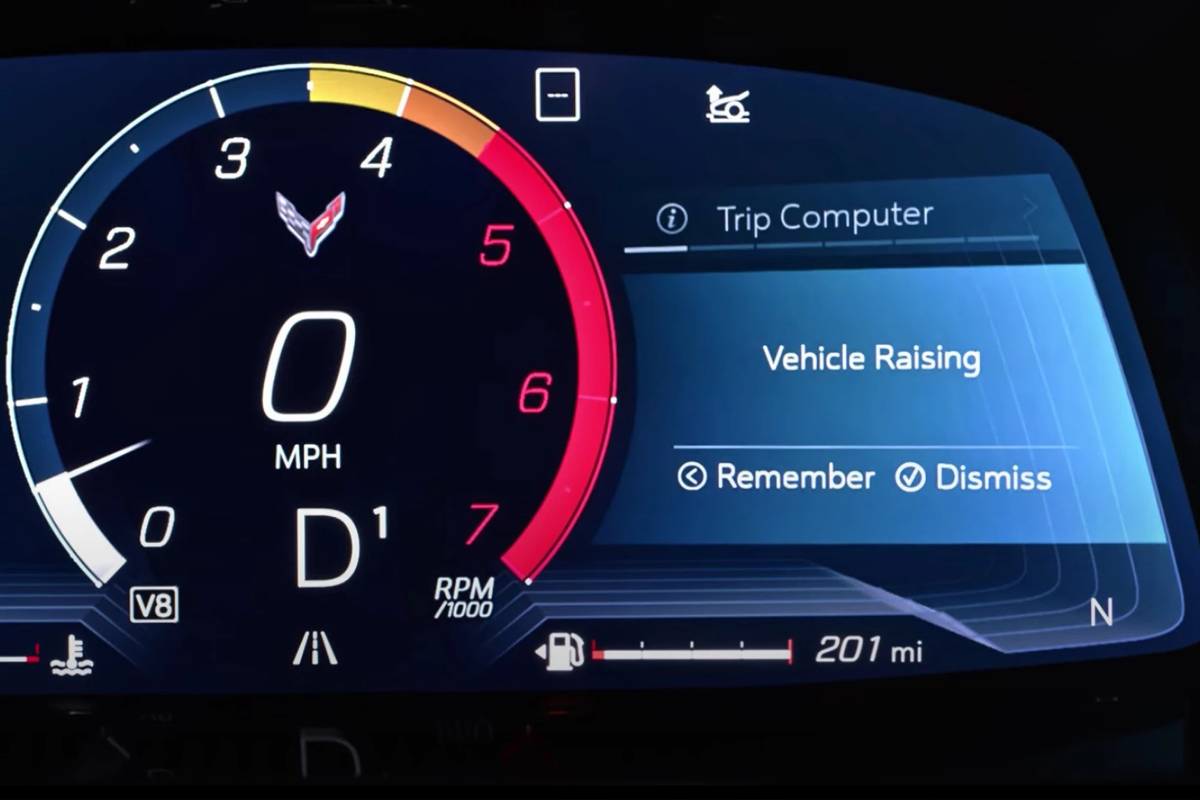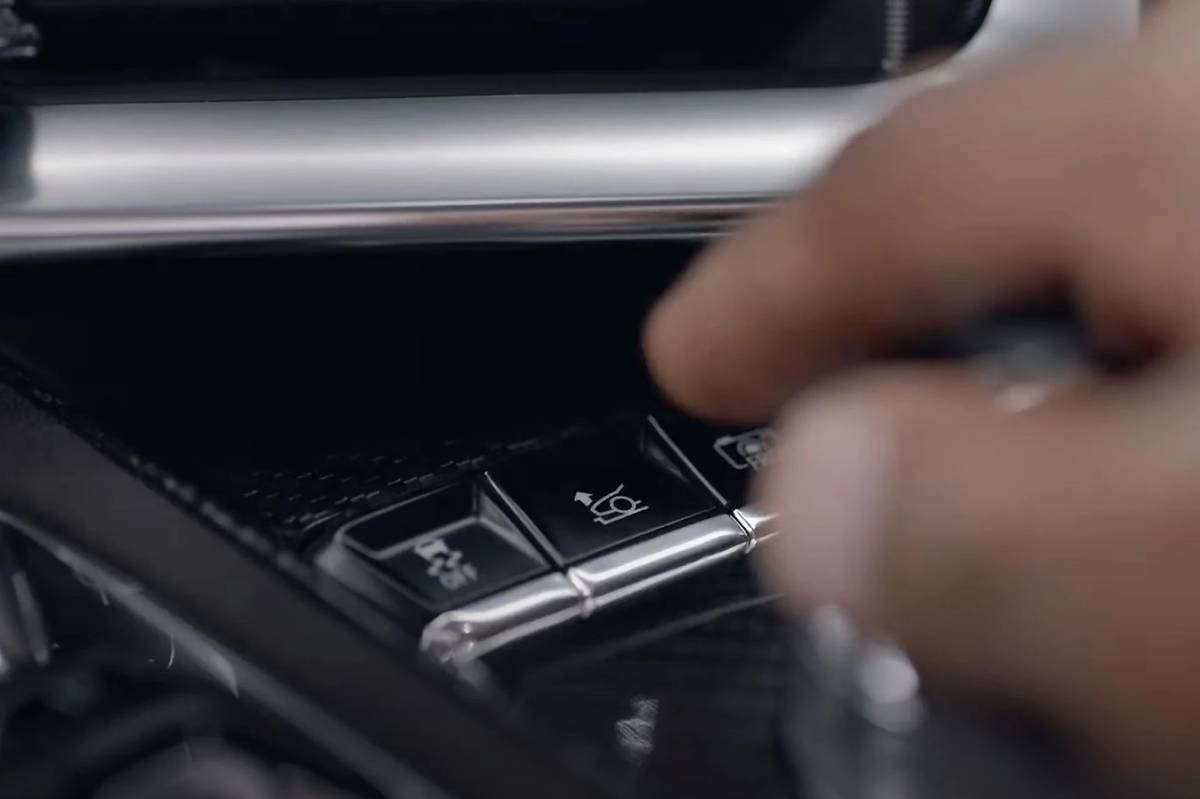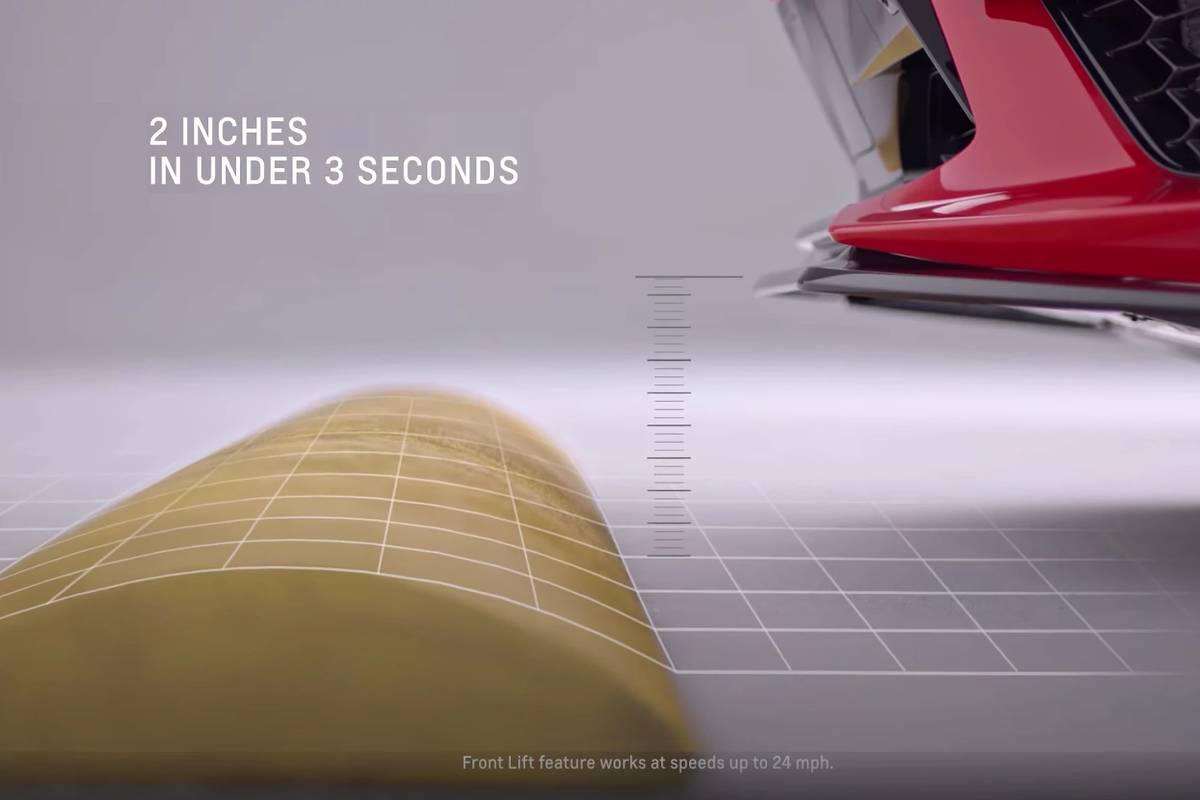2020 Chevrolet Corvette C8: Tricks Under 25 MPH


Part of the Chevrolet Corvette’s appeal has long been performance at a relative bargain. Sure, it may cost more than $100,000 for a performance version, but that six-figure Corvette can challenge cars two or three times the price. And now Chevrolet has added a new optional feature to make the eighth-generation mid-engine C8 even more like its supercar competitors: a front suspension lift system that enables the Corvette to clear obstacles less extreme vehicles have no problem clearing (but those cars can’t go from 0-60 mph in under 3 seconds, either).
Related: Should You Pick or Skip the 2020 Chevrolet Corvette Convertible?
- ${price_badge()}
- ${ami_badge()}
- ${battery_badge()}${ev_report_link()}
- ${hot_car_badge()}
- ${award_badge()}
- ${cpo_badge()}
${price_badge_description}
${ami_badge_description}
The EV Battery Rating is based on this vehicle's current expected range relative to the vehicles expected range when new. ${battery_badge_text}
This vehicle is certified pre-owned, backed by a manufacturer warranty, and typically undergoes a rigorous multi-point inspection to ensure quality and reliability.
This vehicle is currently in high demand given its competitive price, desirable features, and overall condition, and may have a higher chance of selling quickly.
Shop the 2021 Chevrolet Corvette near you


What It Does
In a Corvette equipped with the optional front lift, the driver approaches an obstacle — a speed bump, steep driveway, etc. — and presses the button ahead of the gear selector to activate the front lift. Assuming the car is traveling 24 mph or less, and there are no doors or trunks open, the hydraulics raise the front end about 2 inches in under 3 seconds and the driver can then scale the obstacle with less fear that the underside of the car is going to be damaged. Once over the obstacle, the driver can press the button again to lower the car, or accelerate above 24 mph and the car will automatically lower itself.

Should the obstacle be a regular part of a route, when activating the lift system, the driver will be prompted to have the car remember the location using GPS and lift itself when it arrives at that location in the future. The system can remember up to 1,000 locations. Adding a particular location to the memory is as simple as clicking the OK button on the steering wheel when prompted.
Here’s a video of how it works:
What It’s Like in Practice
It’s extremely cool and one of the first things I showed off to an interested friend. (Note: Besides the speed restriction, the system won’t lift the car if a door or trunk is open, so don’t be like me and try to activate it with the door open. It won’t work, and you’ll look silly.) Driving a car with supercar features — even if those features have nothing to do with going faster — is enjoyable, especially when the car doesn’t cost supercar money.
The lift was enough to handle the extra large speed bumps (“speed humps,” in Chicago parlance) in my neighborhood and throughout the city, as well as the entrance to the alley behind my building and many other parking lot entrances.

I also appreciated that the system works up to a reasonable speed. I didn’t have to test the patience of drivers behind me by coming to a full stop or slowing down to single digit speeds in order to get over a speed bump. All it takes is a little sense of timing to have the car fully lifted before you get to the speed bump or whatever else threatens the precious underside of the Corvette.
The memory function is also fairly straightforward and works quickly enough once engaged to lift the car — just give it time to work and don’t go racing toward a speed bump. In my brief time with the car I didn’t come close to finding 1,000 different locations for the system to remember (in case you were worried I wasted all my time driving a C8 Corvette over speed bumps, I did not), but that number feels substantial enough to meet most owners’ needs, and the lift will still work without the memory function.
Is It Worth the Cost?
How much would you pay to avoid the painful sound and accompanying sinking feeling of one of your favorite things being scraped against the road? The peace of mind that the system delivers seems well worth the $1,995 option cost on 2021 2LT and 3LT models; on our test car, a 2020 2LT, it was an even more reasonable $1,495. Buyers of 1LTs, however, will have to remain extra cautious or invest in aftermarket alternatives.
More From Cars.com:
- Why Buy a 2021 McLaren GT When You Could Have a C8 Corvette?
- What Does the Z-Mode Button Do in the 2020 Chevrolet Corvette?
- 2021 Chevrolet Corvette: What’s Changed
- 2020 Chevrolet Corvette: How I’d Spec Mine
- Living With a 2020 Chevrolet Corvette Stingray C8: All That and Fuel Efficient Too?
Related Video:
Cars.com’s Editorial department is your source for automotive news and reviews. In line with Cars.com’s long-standing ethics policy, editors and reviewers don’t accept gifts or free trips from automakers. The Editorial department is independent of Cars.com’s advertising, sales and sponsored content departments.

Road Test Editor Brian Normile joined the automotive industry and Cars.com in 2013, and he became part of the Editorial staff in 2014. Brian spent his childhood devouring every car magazine he got his hands on — not literally, eventually — and now reviews and tests vehicles to help consumers make informed choices. Someday, Brian hopes to learn what to do with his hands when he’s reviewing a car on camera. He would daily-drive an Alfa Romeo 4C if he could.
Featured stories




